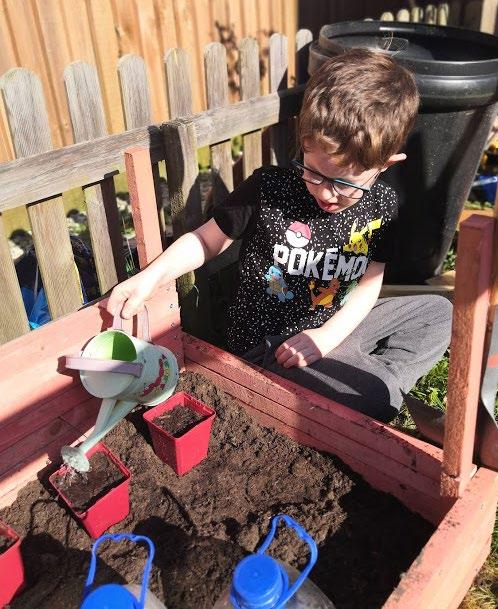
3 minute read
Play and being well
It is generally accepted that well-being is the result of a positive physical, social and mental state. Playing is central to children’s physical, mental, social and emotional health and well-being. It is essential for a happy and healthy childhood.
Play involves children doing as they wish in their own time and in their own way. It has the key characteristics of fun, uncertainty, challenge, flexibility and non-productivity, as defined by the United Nations Committee on the Rights of the Child. For children, playing is one of the most immediate and important aspects of their lives – they value time, freedom and quality places to play.
Advertisement
It is clear that playing has a positive impact on multiple important health outcomes including increased physical activity, reducing childhood obesity, improving well-being in children and helping to develop resilience. However, it is vital that playing is also recognised as worthwhile for the enjoyment it brings to children and their families in their immediate lives. Being up to date with current guidance and research helps us to ensure that our advocacy work is based on the growing body of solid evidence that supports both the long-term and immediate benefits of providing for children’s play.
The four UK Chief Medical Officers’ physical activity guidelines recognise the importance of play for children’s development. Modern life has made things comfortable for us and many of us spend a long time being inactive at home and at work – this doesn’t burn off the energy we are consuming.
The physical activity guidelines for children and teenagers aged 5 to 18 years recommend that:
All children should engage in moderate to vigorous intensity physical activity (MVPA) for at least 60 minutes every day. Children should engage in a variety of types and intensities of physical activity every day to develop movement skills, muscular fitness, and bone strength. Activities can include hopping, skipping, and swinging using body weight or working against resistance. Children should aim to minimise the amount of time spent being sedentary, and when possible should break up long periods of not moving with at least light physical activity.
Making sense of the guidelines • Moderate intensity activities, such as cycling, make us warmer, breathe harder, and our hearts beat faster, while still being able to talk. • Vigorous activities, such as running fast, playing tag and scooting, have similar but greater effects, and make talking much harder. • Muscle- and bone-strengthening activities such as hopping, skipping, and swinging involve using body weight or working against resistance. • Sedentary behaviour is activity with very low energy expenditure, primarily sitting or lying down. Sedentary activity includes screen-time (watching television, computer use, video games), sitting to read, talk, do homework, or listen to music.
Benefits of play The added responsibility of physical and social distancing means that we find ourselves taking part in more sedentary activities. During changing and challenging times, it is important that children are supported to get up and about. This is good for both their physical and mental well-being.
Participation in regular physical activity can increase self-esteem and reduce stress and anxiety. Children begin and maintain their active lives through playing. Physical activity through playing allows children to have a better outlook on life by building confidence, managing anxiety and depression, and increasing self-esteem and mental skills.
Playing allows for peer interactions that are important components of social and emotional well-being. In times when it is harder for children to socialise with friends, it is important to remember that playing alone has important benefits, too. When playing alone, children begin to recognise their own emotions, feelings, and thoughts, as well as how to control them. Children also learn to feel comfortable with being by themselves and learn ways to manage their boredom on their own.
Through playing children experience a range of emotions including frustration, determination, achievement, disappointment and confidence, and through practice, can learn how to manage these feelings.
Playing is the most natural and enjoyable way for children to be active, keep well and be happy. Playing can contribute to improved well-being for everyone during times of uncertainty.









